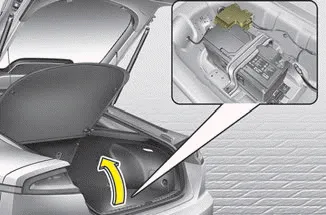Kia Stinger CK: Fuses / Fuse/relay panel description
Contents:

■ Driver’s side fuse panel

■ Engine compartment fuse panel

■ Rear fuse box panel

■ Battery box fuse panel
Inside the fuse/relay panel covers, you can find the fuse/relay label describing fuse/relay name and capacity.
✽ NOTICE
Not all fuse panel descriptions in this manual may be applicable to your vehicle. It is accurate at the time of printing. When you inspect the fuse panel in your vehicle, refer to the fuse panel label.
Driver’s side fuse panel

Instrument panel (Driver’s side fuse panel)




Engine compartment fuse panel

Engine room compartment fuse panel




Relay

Rear fuse box panel

Rear fuse box panel

Battery box fuse panel

Battery box fuse panel

Other information:
Kia Stinger (CK) 2018-2023 Owner's Manual: Center Fascia Panel
Components and components location Component Location 1. Monitor fascia panel Repair procedures Replacement Put on gloves to protect your hands. • Use a plastic panel removal tool to remove interior trim pieces without marring the surface.Kia Stinger (CK) 2018-2023 Owner's Manual: Console ON/OFF Actuator
Repair procedures Inspection 1. Turn the ignition switch OFF. 2. Disconnect the mode control actuator connector. 3. Verify that the mode control actuator operates to the defrost mode when 12V is connected to terminal 3 and ground to terminal 7. Verify that the mode control actuator operates to the vent mode when connected in reverse.Categories
- Manuals Home
- Kia Stinger Owners Manual
- Kia Stinger Service Manual
- New on site
- Most important about car
Contents
Copyright © 2025 www.kstinger.com 0.0101


